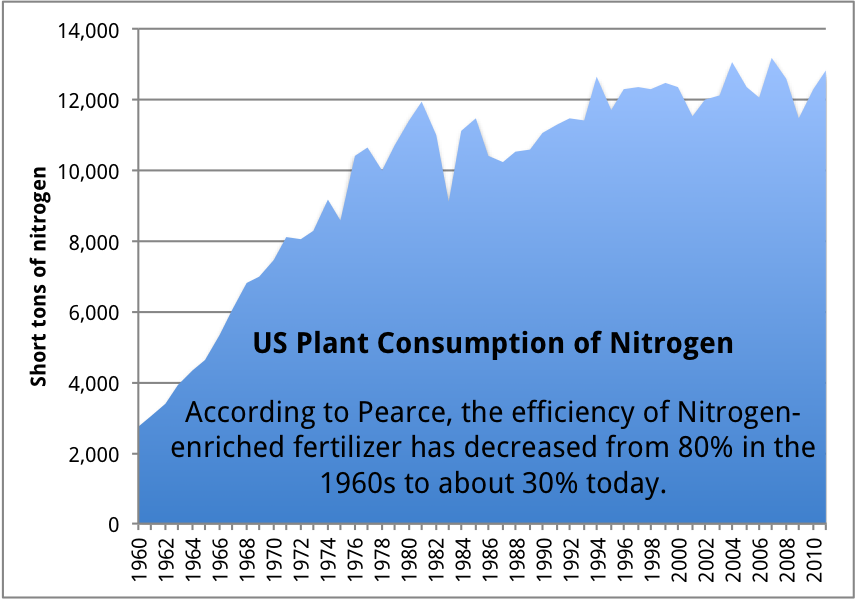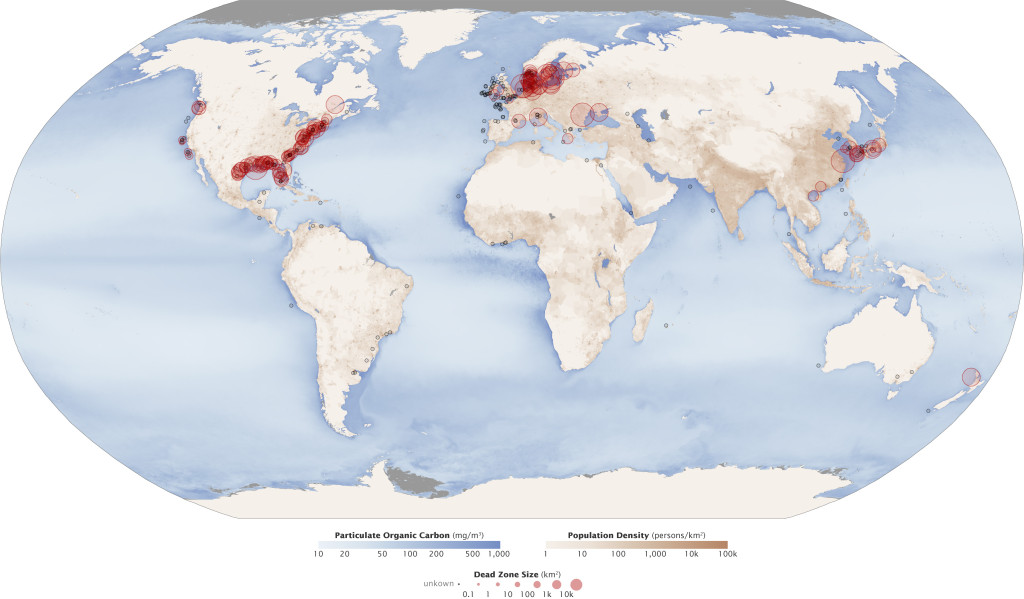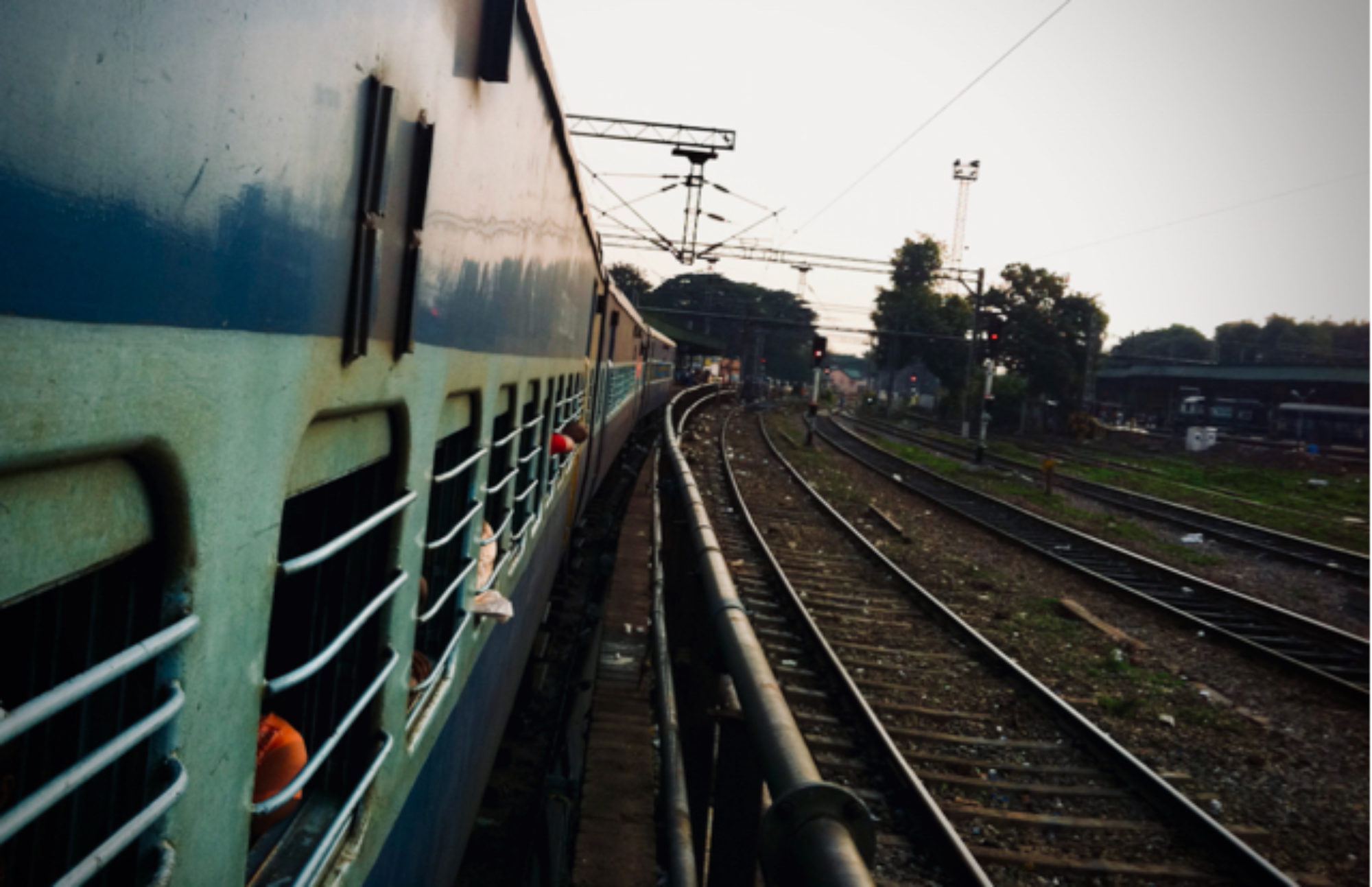Since 1960 we have increased global food production by 2.5X (FAO) and more than doubled our population. One of the biggest contributing factors to our increased crop production is Nitrogen and the Nitrogen-enriched fertilizer that is produced from it. Nitrogen is one of the basic building blocks of amino acids: a fundamental part of any organic organism and hugely beneficial to crop growth. However, it can have detrimental effects on the global ecosystem when used incorrectly or in excess. In order to balance the benefits and risks associated with Nitrogen use in agriculture, we’re looking towards innovative technologies in precision agriculture.
Nitrogen: Benefits throughout History
Originally discovered in 1908 by Fritz Haber, Ammonia, and subsequently Nitrogen-enriched fertilizer, was one of the most influential scientific discoveries for modern agriculture. Previous to Haber’s discovery, farmers relied on naturally occurring Nitrogen-rich fertilizers, which were expensive and ineffective. The most important test for synthetic fertilizer came in the mid-1900s with the Green Revolution. Hoping to increase outputs for farmers throughout the developing world, Norman Borlaug, father of the Green Revolution, introduced hybrid seeds and Nitrogen-enriched fertilizer. Borlaug is widely credited with saving a billion people from starvation by helping to increase the world’s grain output by more than 150% per acre (Miller). Today it is estimated that Nitrogen-enriched fertilizer is used to produce crops that feed over 3 billion people (Pearce).

The introduction of Nitrogen-enriched fertilizer has had a significant impact on agriculture, both positive and negative. The problem, according to James Galloway, a Professor of Environmental Science at the University of Virginia, Charlottesville, and a leading nitrogen researcher is determining “how to maximize nitrogen’s benefits while diminishing its negatives – especially waste” (Clayton).
Too Much of a Good Thing
Eager to reap the benefits of Nitrogen-enriched fertilizers, farmers have started overusing it, as shown by the dramatic increase in its use in the US over the last 50 years. It is estimated that less than 21% of the 80 million tons of fertilizer that farmers apply to their crops is actually absorbed, in other words nearly 63 million tons of the fertilizer is wasted (Pearce). As one Iowa corn farmer explained, “They say you only need a hundred pounds per acre. I don’t know. I’m putting on closer to one hundred eighty. You don’t want to err on the side of too little,” (Pollan).

If current trends continue, the amount of Nitrogen present in the natural environment is set to reach over 220 million tons by 2050: more than six times the safe threshold (Pearce). While the use of Nitrogen in agriculture is paramount in increasing crop yields, there are also very serious consequences to the overuse. As an accelerator of organic life, high levels of Nitrogen can disrupt entire ecosystems by reducing biodiversity, expediting climate change, and reducing oxygen levels to the point of acidifying and killing aquatic ecosystems.

One of the most shocking effects of Nitrogen runoff is the “dead zones” that now appear in oceans and other large bodies of water. Dead zones appear when Nitrogen levels are so high that they suppress the oxygen in the water, which results in the reduction of biodiversity to the point that the area is no longer able to support life. For example, the Gulf of Mexico’s dead zone can be traced directly back to the runoff created in America’s Corn Belt and throughout the Mississippi River Valley in many Midwestern states. The number of dead zones is quickly increasing and now covers over a quarter of a million square kilometers of ocean (Pearce).
The Ag Tech Revolution
The growing trend of precision agriculture encompasses a variety of techniques that can be used to optimize agricultural returns while preserving resources like Nitrogen. Equipment supported by Variable Rate Technology and Decision Support Systems work to collect data from the field, analyze that data, and determine the appropriate use of resources for each of the analyzed zones. By incorporating these data systems in farm management equipment, including seeders, sprinklers, and fertilizer equipment, farmers can ensure that their resources are utilized effectively. In a recent study utilizing precision agriculture technology, it was found that on-farm management of Nitrogen can cut Nitrous Oxide emissions by 25% without damaging crop output at all (Winiwarter, Ermolieva).
Precision agriculture is not new, but only recently have these tools be within reach of the 500 million smallholder farmers who produce 80% of the food consumed in Asia and Sub-Saharan Africa (IFAD). In order to support a rapidly increasing global population while mitigating environmental degradation and climate change, it will be necessary to increase the efficiency of farming practices, especially that of smallholder farmers.
As one of the largest factors in farm-related environmental degradation, Nitrogen-enriched fertilizers will again play a key role in an emerging Ag Revolution. This time, the focus is on appropriate technology in order to optimize returns on inputs while minimizing loss and runoff. We’re excited about the number of technologies and innovations that are in development to address this challenge as it will be one of the largest agricultural issues in the coming years. Contributing to issues of agricultural productivity, population growth, climate change, and environmental sustainability, precision agriculture technologies have the potential to fill a large market gap and huge social need.
Works Cited
Bruckner, Monica. “The Gulf of Mexico Dead Zone.” Microbial Life. Science Education Resource Center at Carleton College, n.d.
Clayton, Mark. “Earth’s Growing Nitrogen Threat.” The Christian Science Monitor. N.p., 12 Jan. 2010.
Fischer, G., W. Winiwarter, and T. Ermolieva. “Integrated Modeling Framework for Assessment and Mitigation of Nitrogen Pollution from Agriculture: Concept and Case Study for China.” Agriculture, Ecosystems & Environment 136.1-2 (2010): 116-24.
Food and Agriculture Organization of the United Nations, FAOSTAT database (FAOSTAT, 2014), available at http://faostat.fao.org/. February 2011.
International Fund for Agricultural Development. “Smallholders can feed the world.” IFAD Viewpoint. Retrieved from http://www.ifad.org/pub/viewpoint/smallholder.pdf.
Kaspar, T.C, Colvin, T.S., Jaynes, B., Karlen, D.L., James, D.E, Meek, D.W. 2003. Relationship between six years of corn yields and terrain attributes. Precision Agriculture, 4, 87-101.
Miller, Henry I. “Norman Borlaug: The Genius Behind The Green Revolution.” Forbes. Forbes Magazine, 18 Jan. 2012.
Ogburn, Stephanie. “The Dark Side of Nitrogen.” Grist. Grist Magazine, 5 Feb. 2010.
Pearce, Fred. “The Nitrogen Fix: Breaking a Costly Addiction.” Yale Environment 360. Yale School of Forestry & Environmental Studies, 5 Nov. 2009.
Pollan, Michael. The Omnivore’s Dilemma. New York: Penguin, 2006.
Zimmer, Carl. “Provocative New Study Warns of Crossing Planetary Boundaries.” Yale Environment 360. Yale School of Forestry & Environmental Studies, 23 Sept. 2009.
New Here?
- Learn about what we do.
- Follow us on Twitter.
- Like us on Facebook.
- Join us on LinkedIn.
- Add us on Google+.
- Sign up for our mailing list.
- Catch up on past Weekly Reviews.
- Fundraising for a mobile tech, alternative energy, or ag tech startup? Apply.
